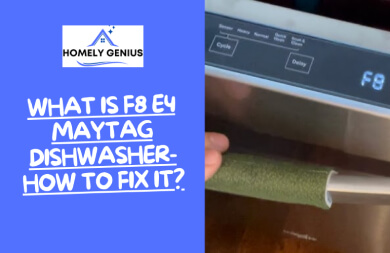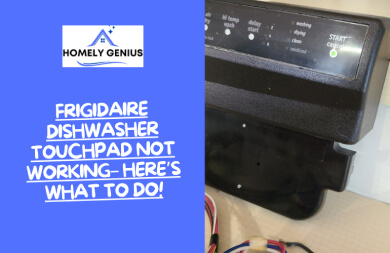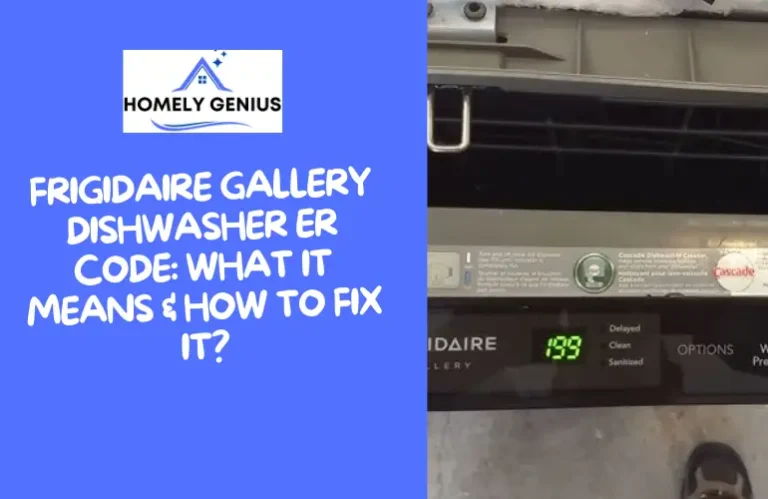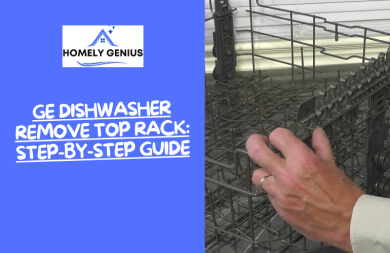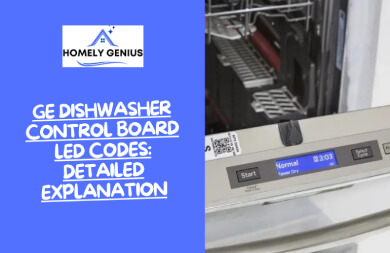Dish Washer Not Washing: Top Fixes to Restore Sparkling Clean Dishes
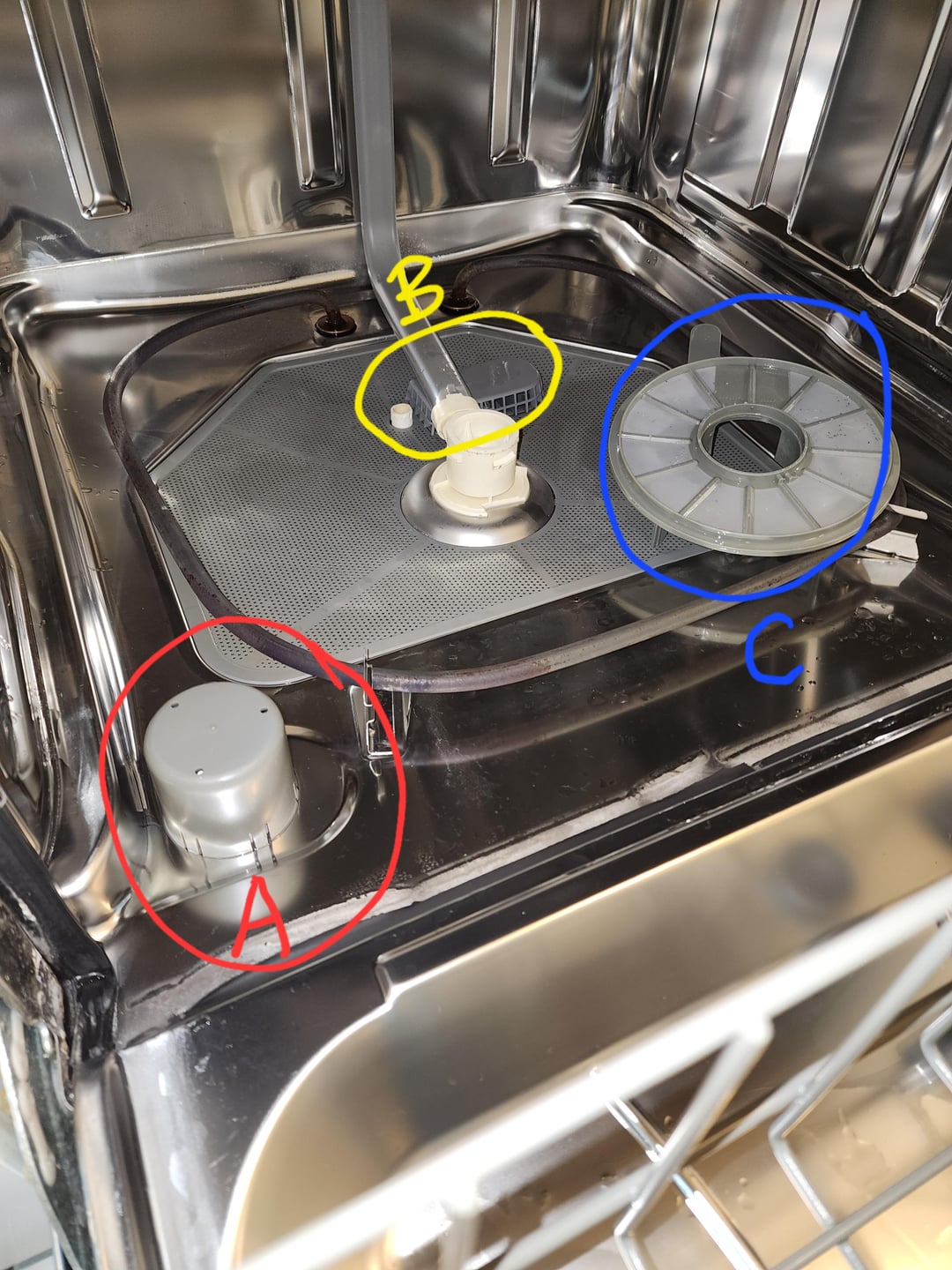
A dishwasher not washing properly can result from clogged spray arms or a malfunctioning pump. Addressing these issues promptly ensures efficient cleaning.
Dishwashers are essential for modern kitchens, providing convenience and efficiency in cleaning dishes. Problems arise when dishwashers fail to wash properly, causing frustration and inconvenience. Common issues include clogged spray arms, a malfunctioning pump, or using the wrong detergent. Regular maintenance and proper usage are crucial for optimal performance.
Ensuring that filters are clean, spray arms are unclogged, and the correct detergent is used can prevent most issues. Understanding these factors helps in maintaining a fully functional dishwasher, saving time and effort in manual dishwashing.
Common Causes Of Dishwasher Issues
Your dishwasher not washing properly can be frustrating. Understanding the common causes can help you fix the problem quickly. Below are some of the main issues that might be affecting your dishwasher’s performance.
Clogged Spray Arms
Spray arms are crucial for cleaning dishes. They rotate and spray water to remove food particles. If they are clogged, water can’t flow freely.
- Food particles can block the spray holes.
- Mineral deposits from hard water can also cause blockages.
Regularly clean the spray arms to keep them functioning well. Remove them and rinse them under warm water. Use a toothpick to clear any blocked holes.
Faulty Detergent Dispenser
The detergent dispenser releases soap during the wash cycle. If it’s faulty, your dishes won’t get clean.
- Broken latch can prevent the door from opening.
- Damaged spring might not release detergent properly.
Check the dispenser for visible damage. Replace it if necessary. Make sure to use the correct type of detergent.
Water Supply Problems
A dishwasher needs a good water supply to wash dishes. If there is a problem, it won’t work well.
- Low water pressure can affect performance.
- Kinked or blocked hoses might restrict water flow.
Ensure that the water supply valve is fully open. Inspect hoses for kinks or blockages. Replace any damaged hoses promptly.
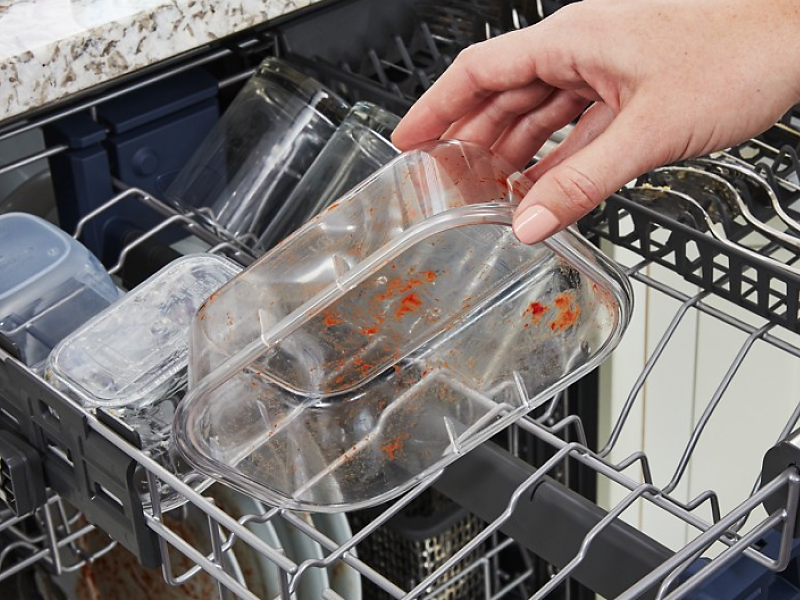
Credit: www.maytag.com
Basic Troubleshooting Steps
Is your dishwasher not washing your dishes properly? Before calling a repair service, try these basic troubleshooting steps to identify and potentially fix the problem. These steps can help you save both time and money.
Inspect The Spray Arms
The spray arms are crucial for cleaning your dishes. They spin and spray water to reach all areas. Check if they are clogged or blocked.
- Remove the spray arms.
- Inspect for food debris or mineral buildup.
- Clean the spray arms using a brush and warm water.
- Ensure they spin freely before reattaching.
Check The Detergent Dispenser
If the detergent dispenser is not working, your dishes won’t get clean. Follow these steps:
- Open the detergent dispenser.
- Check if any detergent is stuck inside.
- Clean any residue with a damp cloth.
- Ensure the dispenser door opens and closes smoothly.
Verify Water Supply
A proper water supply is essential for your dishwasher. Check these points:
- Ensure the water valve is fully open.
- Inspect the inlet hose for kinks or damage.
- Check the water pressure. It should be at least 20 PSI.
- Clean the inlet filter to remove any clogs.
By following these basic troubleshooting steps, you can often resolve common dishwasher issues yourself. Always refer to your user manual for specific instructions related to your model.
Cleaning The Spray Arms
Is your dishwasher not cleaning your dishes properly? The spray arms might be clogged. Cleaning the spray arms can make your dishwasher work like new. Follow these simple steps to get spotless dishes again.
Removing Debris
First, remove the lower rack of your dishwasher. Locate the spray arms at the bottom. Gently pull the spray arms out. Check for any visible debris or food particles. Use a toothpick or a small brush to remove any debris. Ensure all holes are clear.
Using Vinegar Solution
Fill a bowl with warm water. Add a cup of white vinegar to the bowl. Submerge the spray arms in the vinegar solution for 30 minutes. This will dissolve any built-up grease and grime. Use a soft brush to scrub the spray arms gently. Rinse with warm water.
Reattaching Spray Arms
After cleaning, ensure the spray arms are completely dry. Place the spray arms back in their original position. Press firmly to secure them in place. Rotate the spray arms to ensure they move freely. Reattach the lower rack of the dishwasher.
Your dishwasher should now wash dishes more effectively. Regular cleaning of spray arms can prevent future clogs.
Fixing The Detergent Dispenser
Is your dishwasher not cleaning dishes properly? The detergent dispenser might be the culprit. A malfunctioning dispenser can leave dishes dirty. Fixing this issue is simple. Follow these steps to get your dishwasher working again.
Testing The Dispenser
First, check if the dispenser is working. Open the dishwasher door. Inspect the dispenser for any blockages. Ensure it opens and closes smoothly.
- Run a short cycle without dishes.
- Listen for the dispenser’s click sound.
- Check if detergent is released.
If the dispenser doesn’t open, it may need replacement.
Replacing The Dispenser
If the dispenser is faulty, replace it. Purchase a compatible dispenser for your dishwasher model.
- Unplug the dishwasher for safety.
- Open the dishwasher door and locate the dispenser.
- Remove screws holding the dispenser.
- Disconnect wires carefully.
- Install the new dispenser and reconnect wires.
- Secure it with screws.
- Plug the dishwasher back in and test.
These steps should help install the new dispenser.
Using Proper Detergent
Using the right detergent is crucial. Not all detergents work well with every dishwasher.
- Use detergent recommended by the manufacturer.
- Avoid using too much or too little detergent.
- Consider using tablets or pods for convenience.
A proper detergent ensures dishes come out clean and sparkling.
Ensuring Proper Water Supply
A dishwasher that doesn’t clean well can be frustrating. One common issue is improper water supply. Ensuring a steady flow of water is crucial. This section guides you through a few steps to check and ensure proper water supply.
Checking Water Inlet Valve
The water inlet valve controls water flow into the dishwasher. First, locate the valve, usually at the bottom. Make sure it is open fully. Turn it clockwise to open it completely. If it’s already open, move to the next step.
Inspecting Water Pressure
Low water pressure can affect the dishwasher’s performance. Use a pressure gauge to check the water pressure. It should be between 40 to 60 psi. If the pressure is low, contact a plumber to fix it.
Cleaning The Inlet Screen
The inlet screen can get clogged with debris. This restricts water flow. To clean the screen, follow these steps:
- Turn off the water supply.
- Remove the hose from the inlet valve.
- Locate the screen inside the valve.
- Use a small brush to clean the screen.
- Reattach the hose and turn the water back on.
Ensuring proper water supply can solve many dishwasher issues. Regular maintenance keeps your dishwasher running smoothly.
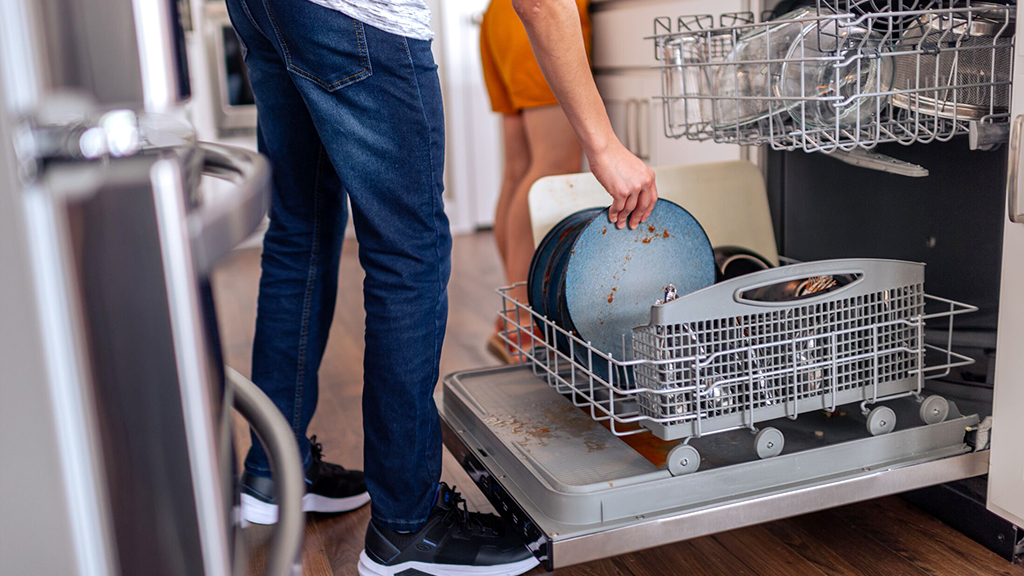
Credit: www.asurion.com
Regular Maintenance Tips
Keeping your dishwasher in top shape ensures clean dishes every time. Follow these regular maintenance tips to avoid any washing issues.
Monthly Cleaning Routine
Performing a monthly cleaning routine can prevent build-up and maintain efficiency. Follow these steps:
- Remove the bottom rack.
- Check and clean the filter.
- Wipe down the interior walls.
- Run a hot water cycle with vinegar.
Using Dishwasher Cleaner
Using a dishwasher cleaner can help remove grime and limescale. Choose a cleaner designed for dishwashers and use it as follows:
- Place the cleaner in the detergent compartment.
- Run an empty cycle on the hottest setting.
Repeat this process every month for the best results.
Inspecting Seals And Gaskets
Regularly inspecting seals and gaskets helps prevent leaks and ensures a tight seal. Follow these steps:
- Open the dishwasher door.
- Check the rubber seals around the door.
- Look for cracks, tears, or dirt build-up.
- Wipe them clean with a damp cloth.
Replace any damaged seals to maintain a proper seal.
| Maintenance Task | Frequency |
|---|---|
| Clean Filter | Monthly |
| Run Dishwasher Cleaner | Monthly |
| Inspect Seals and Gaskets | Monthly |
When To Call A Professional
A dishwasher not washing can be frustrating. Sometimes, simple fixes work. Other times, professional help is needed. Knowing when to call a professional can save time and money. Let’s explore key signs and steps.
Identifying Major Issues
Some problems need expert attention. Here are a few signs:
- Water not draining properly.
- Strange noises during cycles.
- Persistent error codes on the display.
- Water leaks from the dishwasher.
These issues often need specialized tools and expertise. Attempting DIY fixes may cause more harm.
Cost-benefit Analysis
Consider the costs before calling a professional. Here’s a simple table:
| DIY Fix | Professional Service |
|---|---|
| Minimal cost | Service fee |
| Time-consuming | Quick resolution |
| Risk of errors | Guaranteed work |
Weighing these factors helps in making the right choice.
Finding Reliable Technicians
Finding a reliable technician is crucial. Follow these steps:
- Check online reviews.
- Ask for recommendations from friends.
- Verify certifications and licenses.
- Request a detailed quote.
Doing this ensures you hire a skilled professional. Always choose someone with a good reputation.
Credit: www.reddit.com
Preventative Measures
Keeping your dishwasher in top shape ensures it cleans effectively. Here are some important preventative measures you can take to avoid problems.
Loading Dishes Correctly
Properly loading your dishwasher is key. Follow these steps to ensure your dishes get clean:
- Place large items at the sides and back.
- Face dirty surfaces towards the spray arms.
- Avoid overloading the dishwasher.
- Ensure there is space between dishes.
Using Quality Detergent
Using a good detergent makes a big difference. Consider these points:
| Type | Benefits |
|---|---|
| Powder | Effective for tough stains. |
| Liquid | Dissolves easily in water. |
| Pods | Convenient and pre-measured. |
Running Hot Water Before Start
Cold water can affect cleaning performance. Run hot water before starting your dishwasher:
- Turn on the kitchen faucet.
- Let it run until the water is hot.
- Then start your dishwasher.
This ensures hot water fills the dishwasher right away.
Frequently Asked Questions
How Do You Fix A Dishwasher That Won’t Wash?
Check water supply, clean spray arms, inspect inlet valve, unclog filters, and ensure proper detergent use. Consult manual.
Why Won’t My Dishwasher Start Washing?
Your dishwasher might not start due to power issues, door latch problems, or a faulty control panel. Check the power supply and door latch. Ensure the control panel is functioning properly.
Why Is My Dishwasher Not Washing With Water?
Your dishwasher might not be washing with water due to a clogged spray arm, faulty inlet valve, or blocked filter.
Why Does My Dishwasher Say Washing But No Water?
Your dishwasher may say “washing” but have no water due to a blocked inlet valve, faulty float switch, or clogged filter. Check these components to resolve the issue.
Why Is My Dishwasher Not Cleaning Dishes Properly?
Clogged spray arms or a dirty filter can affect cleaning performance.
How Do I Fix A Dishwasher Not Washing?
Check for blockages, clean filters, and ensure proper water supply.
Why Is My Dishwasher Not Spraying Water?
A faulty pump or clogged spray arms can stop water flow.
What Causes A Dishwasher To Stop Mid-cycle?
Power issues, door latch problems, or a faulty timer can halt cycles.
Conclusion
A malfunctioning dishwasher can disrupt your routine. Regular maintenance and troubleshooting can often solve the issue. Understanding common problems helps in quick fixes. If problems persist, consider professional help. Keeping your dishwasher in top shape ensures spotless dishes every time.
Stay proactive to enjoy hassle-free kitchen cleanups.

